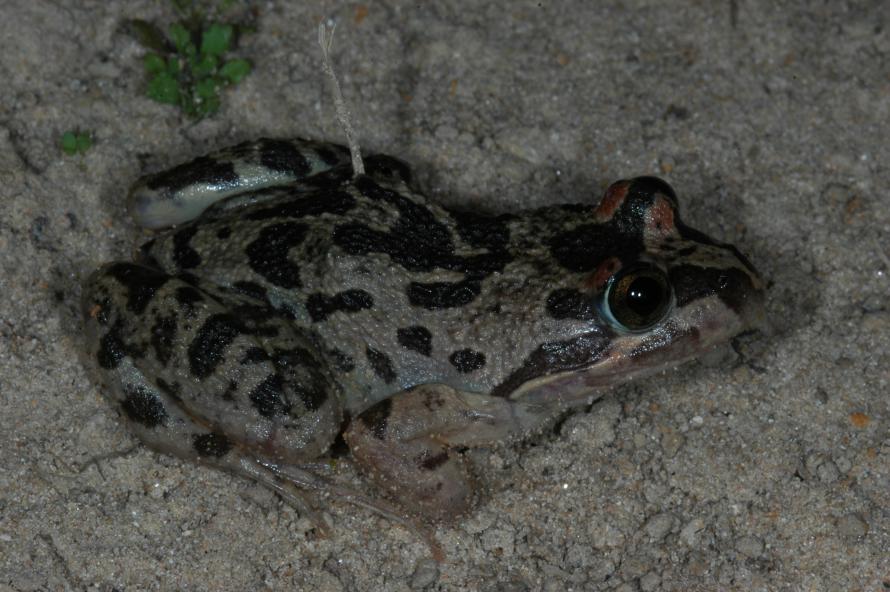

Barking Frog
Limnodynastes fletcheri
| Details | |
|---|---|
| Type | Amphibian |
| Group | |
| Other Common Names | Barking Marsh Frog |
| Biology | Breeding season: spring - autumn, after heavy rains. Females lay approximately 300 pigmented eggs, in a floating foam mass which is often partly attached to grasses. Eggs hatch three days after being laid. Males call from concealed floating vegetation within waterbodies. |
| Distinctive Markings | Reddish-orange patch on their upper eyelid. |
| Taxonomy | |
|---|---|
| Phylum | Chordata |
| Class | Amphibia |
| Order | Anura |
| Family | Myobatrachidae |
| Genus | Limnodynastes |
| Species | fletcheri |
The Barking Frog is a species of non-burrowing frog which has a single 'dog-like' bark.
| Interesting Facts | |
|---|---|
| Diet | Carnivore. Adults feed on a wide variety of insects. |
| Habitat | Adults are most often associated with water, in woodlands and floodplains of rivers. Found under rocks, logs and in yabby burrows. In Victoria, distribution is restricted to the floodplains of the Murray River. |
| Native Status | Native to Australia |